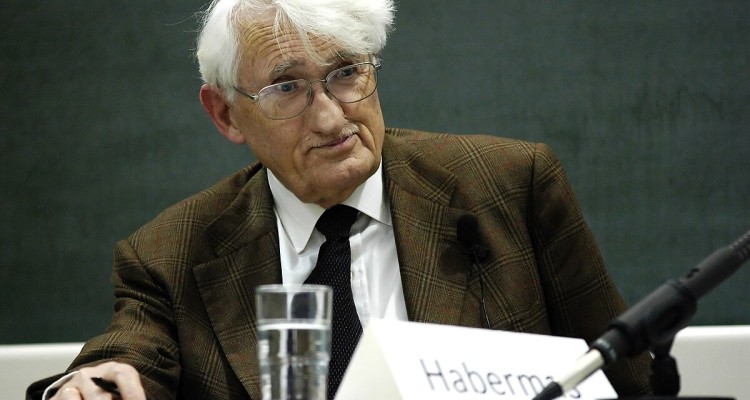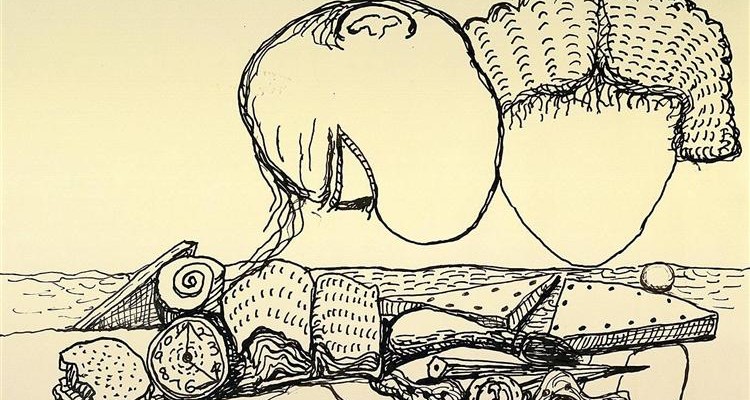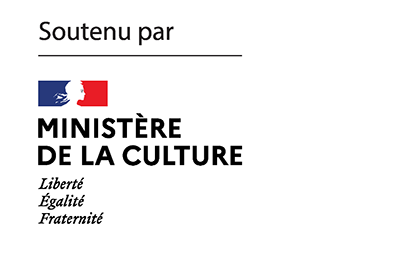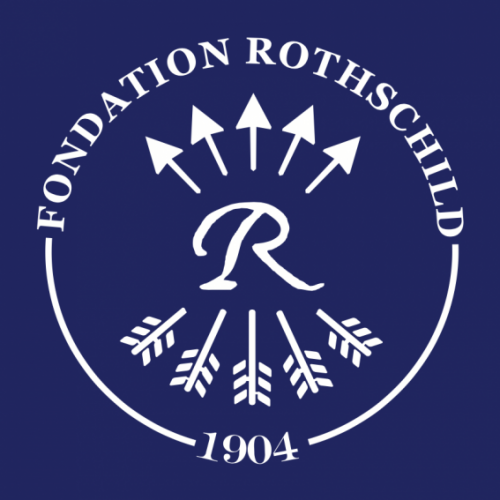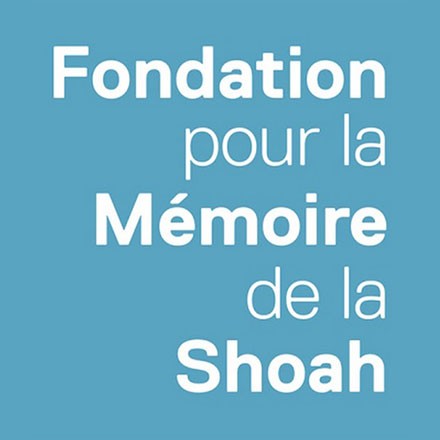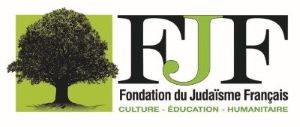“Israel was born a Jewish state, that was the decision of the people, and the question is not what is the identity of the state — it was born this way and it will remain this way.” This little sentence was said on December 22, 2021 by Mansour Abbas, an Arab member of parliament of an Islamist party and Minister Delegate in the Israeli Prime Minister’s Office. Noémie Issan-Benchimol and Elie Beressi give us the context and analyze it as a watershed moment in the history of Israeli political life.
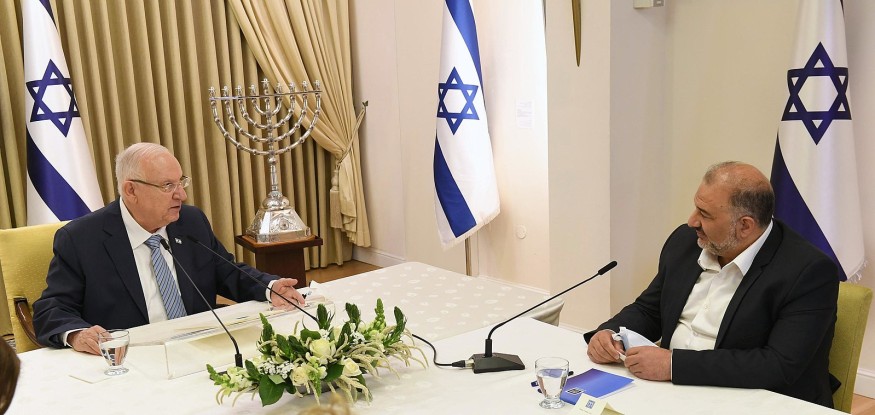
The scene in Israel was surreal, even comical to the European observer: an Islamist leader on a chair, held aloft by his activists as if at a bar mitzvah, with Arabic music playing in the background, surrounded by a blur of Islamic Movement banners, which some people, misled by the green background and Arabic calligraphy common to many Islamic flags, thought were Hamas flags. The celebration hailed the entry of Arab parties into the Israeli governmental game. However bizarre this scene may seem, it captures something of the political, social and religious reality of contemporary Israel, which often thwarts binary, Manichean, stock readings. Jewish supremacists see it as an aberration, the worm in the fruit of an over-ripe democracy. And many European watchers of the region see the malfunctioning of their chema for understanding Israel.
For in Europe, ideological reading overdetermines everything. But this is precisely a situation in which ideological overdetermination has been suspended, allowing for a politics of arrangement, of composition. It may seem surprising to speak of composition and arrangement in what is one of the most heated geopolitical situations in terms of identities, sacred values, and exclusive nationalist imaginaries. And yet, it is clear that these thick and multiple identities that cross and confront each other in this situation allow minorities, statistical or imaginary (e.g., the Jews in Israel, who though in a majority both statistically and politically, live and conceive of themselves as minorities, by virtue of their history as well as their regional situation), to play games of transactional recomposition, which are built on trust, or of mutualized costs and gains.
Indeed, it requires the choice of trust accompanied by guarantees. But above all, it requires symbolic sacrifices on the part of those who recognize and integrate the perspective of the other, sacrifices that are linked to the recognition of the existence of the other. Naftali Benett, Prime Minister of this hodgepodge coalition, comes from the religious Zionist camp. He has paid and still pays for his choice to lead a coalition that an Islamist can make or break, finding himself accused of treachery toward his own camp. In this context, it can be said that Mansour Abbas has gone even further.
In politics, we know that all soundbites are not equal. There are those that will make the news of the day but will be forgotten just as quickly, there are those that set the discourse ablaze and become signposts demarcating positions and camps. And then there are those that make history, or at least have the potential to do so, those that mark the liminal moment between a before and an after. This is the case of the phrase pronounced on December 22, 2021 by Mansour ‘Abbas.
It was during a conversation with a journalist at the Globes Israel Business conference that he said the unthinkable, pronounced the impossible. That day, he granted what no Arab or Palestinian politician had given before him.
The Man of Firsts
He, the first Arab deputy from an Islamist party to sit in the government coalition and no longer only in the opposition, said: “Israel was born a Jewish state, that was the decision of the people, and the question is not what is the identity of the state — it was born this way and it will remain this way.”
The tone may have been realistic, the sentence punctuated with an air of regret, as Abbas stated that the party’s campaign was based on pragmatism, not the sale of dreams or illusions to its voters. But he had crossed a line. His interlocutor at the Globes conference, Mohamed Magidli[1] immediately understood that he was dealing here with nothing less than a symbolic capitulation. At stake was the definition of a new framework of action for the Arab population of Israel: acceptance of the state framework, renunciation of a Palestine stretching “from the River to the Sea,” the redefinition of the group as an Arab minority within a Jewish majority, and above all the (momentary?) abandonment of the vocabulary of the national liberation struggle in favor of a discourse on the rights of minorities in a democratic framework.
Let us examine these remarks. If the first part could still pass for an observation or the statement of a historical fact, the second part sounded like a long-term prediction: Israel is not close to disappearing, we must deal with this fact and abandon magical thinking. Asked whether he was casually dropping nothing less than a bomb, Mansour ‘Abbas certainly responded by reaffirming his opposition to the Nation-State Law (Hoq Ha-Le’om), but also by maintaining the Israeli framework as a possible and accessible site for action:
“”I was at a demonstration against the Nation State Law, and I don’t want to mislead anyone. The question is, what is the status of an Arab citizen in the Jewish State of Israel? That’s the question. And so the challenge now is not just for Mansour Abbas, but for the Jewish public and the Jewish citizen.” he said. “We have to decide whether we want to engage in campaigns that have a chance of succeeding, and then we’ll be able to develop as a society and prosper, and be a section of society with influence, or whether we want to be in an isolationist position and continue to talk about all these things for another hundred years.”[2]
The interpretation of the statement varied according to the eye and inclinations of the observers. All agreed that a taboo had been broken, but opinions differed as to whether this was a good thing or not. It was a proto-messianic epiphany for some religious Zionists (“Look, an Islamist recognizes the existence, even the longevity of Israel”), and an important moment for the political integration of Arabs in Israel for the more pragmatic. Let us add that the little phrase also managed to unite in wrath the Palestine Liberation Organization, the Palestinian Authority, Hamas, and Israel’s other Arab parties, Hadash, Balad, and Ta’al. The fact bears mentioning, as the division of the Palestinian camp is immense.
Ahmad Tibi, the Ta’al deputy, chose to violently attack his former ally: “For the first time, an Arab deputy accepts the reality of the Nation-State Law based on Jewish superiority and Palestinian inferiority.” The Hoq Ha-Le’om, which many analysts have called a superfluous law with a symbolic significance vexatious to Israel’s non-Jewish minorities, reduces the status of the Arabic language to a “special status,” whereas the old legislation inherited from the Mandate period made it an official language on a par with Hebrew. It endorses Israel as the national home of the Jewish people and indeed invites much criticism. However, it seems that Ahmad Tibi, without justification, refers to it as a supremacist and racist proposition. The point is quite debatable. In Liberalism and The Right to Culture, Israeli philosophers Avishai Margalit and Moshe Halbertal, for example, argued for a human right to culture — not just any culture, but one’s own. Thus, it is not incompatible with humanist and liberal values for the State of Israel to have a Jewish character (calendar, perpetuation of culture, Hebrew law as a source and inspiration for contemporary legislation). As long as it fulfills certain political criteria.

Halbertal and Margalit have proposed two criteria for judging whether a nation-state is “liberal-democratic” rather than “fascist-nationalist.” The first is whether the state’s character as a nation-state “undermines the political, economic or cultural rights of minorities.” The second is whether the state “will support and grant the right of self-definition and determination to other national groups living within it.” This is where we must pause. For it must be admitted that the second criterion is particularly difficult in the Israeli-Palestinian case. The fact remains, however, that these criteria make it possible to establish quite clearly the relevant distinction: that between an unequal minority situation and an egalitarian minority situation.
This distinction is the one that allows us to delineate the positions expressed here. Ahmad Tibi, by defending an idea of non-national democracy (medinat kol ezrahkhea), while contradictorily supporting Palestinian nationalism, opposes the very foundation of the Law of the Nation-State, namely the idea of Israel as the Nation-State of the Jewish people, while Mansour ‘Abbas concentrates on obtaining the criteria of equal dignity due to minorities, without calling into question in this respect the very principle underlying the Hoq Ha-Le’om.
Others, notably in Hamas and the PLO, did not have the reserve of Ahmad Tibi, some even predicting for Mansour ‘Abbas the fate of another ‘Abbas, a transparent allusion to Mahmoud ‘Abbas, accused of having “given everything to the Israelis without receiving anything in return.” The qualification of traitor or sellout foreclosed further discussion in any case.[3][3]
The Heir to a Tradition
Yet, this account of ‘the man of firsts’ should not erase the broader theological-political context that allowed the Mansour Abbas phenomenon to emerge. To understand how the phenomenon came about, it is necessary to return to the origins of the Islamic Movement in Israel, and especially to the deep division between a northern, more fundamentalist and separatist (in the descriptive sense of the term) branch opposed to Arab political participation in the Jewish state and a southern branch, strongly influenced by the figure of Sheikh Abdullah Nimr Darwish and the latter’s democratic and pacifist turn[3]. In 1996, the legal ruling (fatwa) of Sheikh Abdullah Nimr Darwish, the founder of the movement, allowed Islamists to participate in the elections, which created the divide between the northern and southern branches – although this divide was never officially recognized by the actors. The United Arab List party (also known by its Hebrew acronym Ra’am), was established as the political wing of Darwish’s Islamist movement in 1996. Darwish’s successor faction is particularly strong in the Triangle[4] and in the Negev, while Sheikh Ra’id Salah’s faction is particularly strong in the Galilee, and in the northern triangle (Wadi Ara).

It was after a stint in prison that Sheikh Darwish became involved in inter-religious dialogue (with Rabbi Michael Melchior) and peace initiatives. He passed away in 2017, but Mansour ‘Abbas, in many ways, is his heir. He does not miss an opportunity to expressly inscribe himself in this lineage. On April 21, 2020, he was able to deliver a historic speech on the Holocaust in the Knesset, in which he spoke plainly about the suffering of the Jewish people at the hands of the Nazis:
“As a religious Palestinian Muslim Arab, who was raised on the legacy of Sheikh Abdallah Nimr Darwish who founded the Islamic Movement, I have empathy to the pain and suffering over the years of Holocaust survivors and the families of the murdered. I stand here to show solidarity with the Jewish people here and forever.”
Conservative Consociativism in Israel, or the Limits of Intersectionality
But there is another side to this “internal normalization” between the Jewish state and its Arab minority promoted by Mansour ‘Abbas: the convergence between the conservative or traditionalist segments of contemporary Israeli society, and its corollary. Beyond the codification of an asymmetrical, but pacified, relationship between the majority and the minority, there is a certain circulation of values between the political representatives of very proximate cultures, which was made explicit by several important figures of the traditionalist Jewish establishment in Israel.
In order to understand this reality, it is necessary this time to return to both the deep civilizational roots that are at stake, and to the chaotic political circumstances of the last years of the Netanyahu period.
Historically, Israeli society is not a homogeneous social body and community of identity, but an amalgam of “tribes,” to use former President Reuven Rivlin’s phrase: three majority Jewish tribes, the secular, the Orthodox, and the national-religious, and a minority tribe that is essentially Arab[5]. Internally, these tribes are subdivided into a multitude of ideological and religious clans. Political parties, under these conditions, act as parliamentary representatives of interests referring to these different subdivisions. Historically, however, Israeli politics has operated on a majoritarian model in which negotiations and the distribution of power were exclusively among the three Jewish tribes, with the Arab parties, in protest against Jewish hegemony, refusing to participate in parliamentary coalitions.
The fact is that this power-sharing arrangement is undergoing a change in the current situation, with a growing willingness on the part of Arab representatives to join the political game, and the convergence of some segments of the Jewish public with some of the Arab public on issues related to social conservatism. This new situation opens the way to what can be described as democratic tribalism of concordance, or “consociativism.” That is, a mode of governance in which representatives of minority groups obtain power-sharing with majority groups despite identity-based cleavages and negotiate support for their political clientele in government in exchange for concessions to their sectoral interests. For the first time, such negotiations are taking place on the right between Jewish and Arab conservatives, for both circumstantial and cultural reasons.
The cultural parallels between rabbinic Judaism and Sunni Islam play out strongly here, reflected in almost identical structural forms of power. The historical political forms assumed by the two civilizations during most of their historical coexistence, exilic for Judaism, and imperial for Islam, should not make us forget these similarities: in each case, there is a patriarchal community[6] subject to a divine law defined as “the way”[7] whose interpretation is entrusted to an elite of scholars who are both theologians and jurisconsults, exclusively male of venerable age[8], teaching disciples in specialized institutions[9], which are de facto the organizing poles of the social body and the seats of power. These poles of power have no legitimacy other than the collective esteem held for the principal sage installed at its head, resulting in what can be called in the haredi Jewish ultra-Orthodox world a “yeshiva feudalism,” with the community divided along personal allegiances to the various rabbis and their courts. In the Israeli Islamist movement, the division runs along tribal[10] lines attached to the cause of one of the two Sheikhs, Darwish or Salah’. Finally, the social dimension of the comparison must be emphasized: the Orthodox and Bedouin sectors in Israel constitute groups facing strong economic difficulties, a poor population poorly integrated with the rest of society and therefore unable to form a real proletariat.
This power structure is reflected in similar means of supervising the politics of both communities: the political action of the elected representatives of both the Haredi and the Islamists is supervised by an unelected council representing the traditional elites[11][12] providing extra-parliamentary direction for political action.
Therefore, when Ra’am broke away from the rest of the motley coalition of Arab parties (communists, nationalists) against the backdrop of a disagreement over the rights of LGBTQI+ minorities, its ethnic coloration was counterbalanced by its religious dimension. Important Jewish figures in the Orthodox world have seen the southern branch of the Islamist movement as a natural and respectable ally for the preservation of traditional society in Israel in the face of reform movements, secular parties and the Westernized public that supports them. Rav Hayyim Kanievsky, the spiritual leader of Ashkenazi Orthodoxy, spoke in favor of Arab participation in a united government against the left: “It is better to go with the representatives of the Arab public than with the representatives of the left (…) The character of the state is also important to them and they do not want to promote a melting pot to make everyone secular. They are also closer to us in terms of military conscription and family values.”

The political situation and the pragmatic opportunism of Mansour ‘Abbas led to another choice: his desire to represent the Arab public at all costs led him to join the anti-Netanyahu parliamentary bloc, giving the heterogeneous coalition of left-wing parties, liberal centrists and religious-Zionists the majority needed to form a government.
Paradoxically, it was the very right-wing Netanyahu who helped make this participation acceptable by entering into negotiations with Mansour ‘Abbas. The leader of the Islamist faction was in a position to dictate certain conditions: negotiations between delegates of segments of the electorate in order to impose on the public compromises between sectoral interests generally divided along ethnic or ideological lines, is one of the permanent features of the Israeli political system, where, it should be remembered, no party really has a coherent class base.
At the same time the most marginal and most crucial member of the new government coalition, appointed as Minister for Arab Affairs, Mansour ‘Abbas could veto, for religious motives , future legislative advances in favor of women and LGBTQI+, and oppose the intrusion of the state in Bedouin affairs, notably on the delicate issue of polygamy in the southern tribes. By cutting himself off from the rest of the more progressive Arab parties in matters of morality, ‘Abbas had sufficiently proven his ideological rigur on the subject. So far, however, this has not happened: by refraining from opposing advances such as the opening of in-vitro fertilization to new minority audiences, he has put himself in a position to obtain concessions from the government on issues like the connection to the electrical grid of Arab homes constructed without permits or the continuing land dispute between Keren Kayemet Le’Israel (Jewish National Fund) and the Bedouin villages of the Negev. After the recent troubles, it is undoubtedly this last issue on which ‘Abbas will stake his political future, that of his person as much as his participatory approach to Israeli governmental life.

In any case, ‘Abbas, through his recent political maneuvers, has become part of Israeli history, inaugurating the possibility of a de facto Israeli consociativism, which until now has existed only de jure.
Modern or Ante-Modern?
That this turnaround was made possible by Mansour ‘Abbas, and not by a progressive Arab socialist living in Tel Aviv (such as Ibtissem Maarana, for example), is explained by all the above. Some may regret this, pointing to the losers in these transactional compositions that expose the selfish heart of all politics. One can think here of the cover of one issue of Charlie Hebdo, which presented the clergy of the three Abrahamic monotheisms united by their misogyny and their patriarchal ideas. Whatever the nature of this trend and its risks, the paradox remains. The significant progress that the trend entails must be properly appreciated, in view of the subsequent evolution of the Israeli regime and of the balance of power between the representation of sectoral interests that characterize it.
Noémie Issan-Benchimol and Elie Beressi
Noémie Issan-Benchimol is a philosopher and doctoral student in religious sciences. Elie Beressi is a political analyst.
Notes
| 1 | The first Arab journalist to be a general news commentator on an Israeli public channel, Channel 12, creator of the Nazarene radio station A-Nas, Mohamed Magadli is also the son of Ghaleb Magadli, who was Israeli minister of science, sports and culture as a member of the Labour Party. |
| 2 | Source in Hebrew and Source in English (translation that elides some oral expressions or details) |
| 3 | See Nachman Tal, “The Islamic Movement in Israel,” The Institute For National Security Studies, Volume 2, Number 4, February 2000. |
| 4 | The Triangle is a concentration of Israeli Arab towns and villages near the Green Line, in the eastern plain of the Sharon region. |
| 5 | Ghiles-Meilhac Samuel, “Israeli Society: Towards Fragmentation? “, Foreign Policy, 2018/3 (Fall), pp. 131-141. |
| 6 | (klal/’ummá) |
| 7 | (halakha/ sharīʿa) |
| 8 | (ḥakhamim / ʿulamā’et fuqahā) |
| 9 | (yeshivot / madāris) |
| 10 | (hamulot) |
| 11 | (Moetzes Gedeolei HaTorah / Majlis esh-Shura) |
